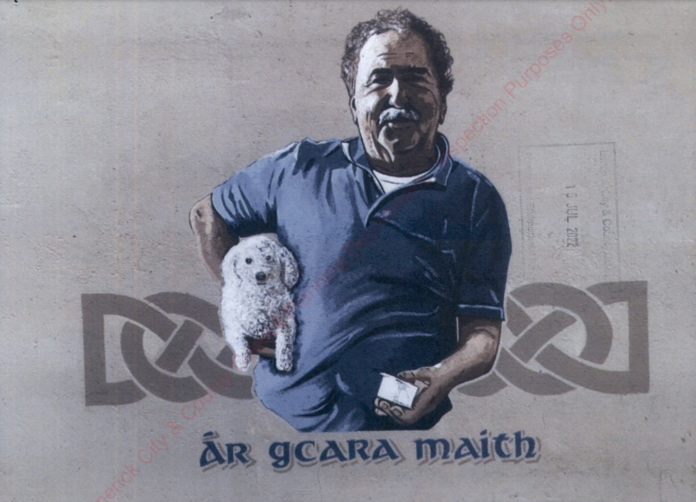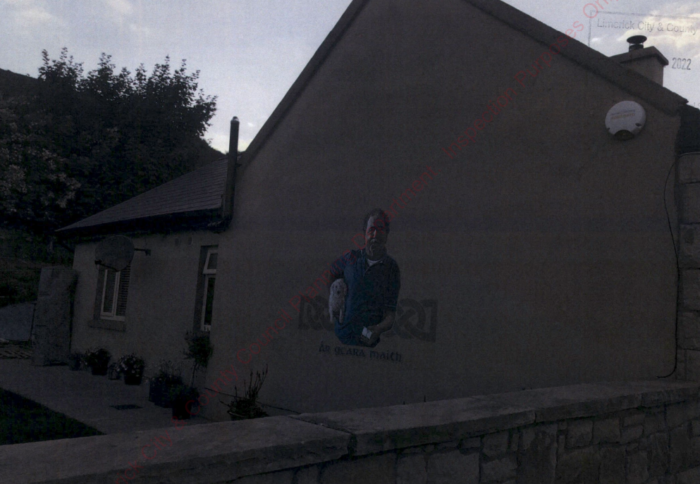
A MEMORIAL mural painted on the gable end of a home in the village of Nicker has been refused retention permission by An Bord Pleanála.
The Nicker mural, which has had residents in a twist since it was first pained last year, depicts a close friend of the current occupiers of the house, Patrick Foley, who has since passed away.
In the planning files, the applicants and homeowners say that Mr Foley left the house to them in his will, and that they wanted to do something to honour his memory.
The mural depicts Mr Foley holding a dog and an ice cream, and is painted on the gable end wall of his former house at The Lane in Nicker.
Limerick City and County Council refused retention permission for the mural in 2022, saying that it detracted from the church next door to the property in question, which is a protected structure.
Members of Mr Foley’s family had also lodged objections to Council planners in relation to the mural, saying that it was “insensitive” to their deceased family member. They also claimed that no permission was given by the deceased, nor or the executor of his will, for the mural and that it would serve as a distraction to road users.

The occupiers lodged an appeal with An Bord Pleanála, with an agent acting for the occupiers saying that they were “somewhat bemused” with the decision to refuse them planning permission to keep the mural, adding that the Council were happy to grant permission for much larger murals in the City Centre, which are also close to protected structures.
The agent also said that the mural had received support from many in the village, where it’s understood that Mr Foley was a well-known and well-liked character.
In their decision to refuse permission, An Bord Pleanála (ABP) said that the mural “would detract from the character of the dwelling, the setting of the adjacent protected structure, and the streetscape”, and would “seriously injure the visual amenity of the area”.
APB’s own inspector had recommended retention permission be granted, but in deciding to go against their inspector, the board said that the mural “is a visually discordant feature in the streetscape, and in particular, when viewed from the protected structure”.


